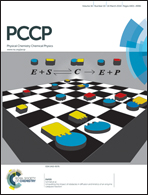Toward a QFT-based theory of atomic and molecular properties
Abstract
The search for a QED-based (and then QFT-based) formalism that brings solid grounds to the whole area of relativistic quantum chemistry was just implicit in the first decades of the quantum theory. During the last few years it was shown that it is still unclear how to derive a well-defined N-electron relativistic Hamiltonian, and also the way negative-energy states may contribute to electron correlation. Furthermore, the relationship among electron correlation and radiative QED corrections is even more difficult to guess. These are few of the fundamental problems that need to be solved before such a program of research is finished within the wavefunction approach to quantum physics. The polarization propagator formalism was developed as an alternative approach to study atomic and molecular properties within both regimes, relativistic and nonrelativistic. In this article we expose how far away one can go today working with polarization propagators, until including QED (and afterwards QFT) effects. We will uncover its deepest formal origin, the path integral formalism, which explains why polarization propagators can be written formally the same in both regimes. This will also explain why the NR limit is obtained scaling the velocity of light to infinity. We shall introduce a few basic aspects of elementary propagators to show what they have in common with polarization propagators. Then we shall remark on the most important news that appears with the latter ones. Within the relativistic regime the contributions of negative energy orbitals to electron correlation are straightforwardly included. New insights on the relationship between spin and time-reversal operators are also given, together with an ansatz on how to consider both, QED and electron correlation effects on the same grounds. We focus here on the treatment of NMR spectroscopic parameters within such a formalism, that is still not broadly used by the quantum chemistry community. Most of the other response properties can be treated in a similar manner.


 Please wait while we load your content...
Please wait while we load your content...